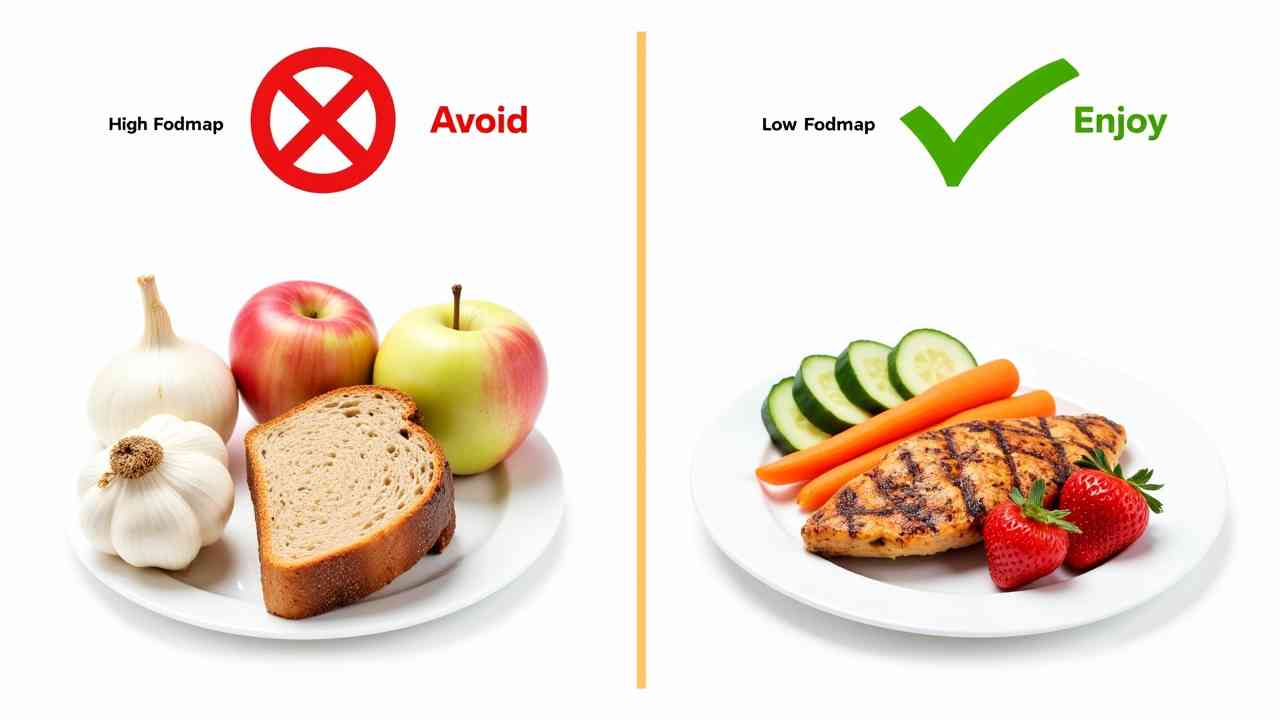
🩺 A Guide to the SIBO Diet (What to Eat for Gut Relief)
🩺 A Medical Guide to the SIBO Diet (For Digestive Relief) 🩺
❗ CRITICAL MEDICAL WARNING: The diet for Small Intestinal Bacterial Overgrowth (SIBO) is a temporary, therapeutic diet. It must be undertaken with the guidance of a qualified doctor or a registered dietitian who specializes in digestive health. This guide provides a general overview and is not a substitute for a personalized medical plan.
If you have been diagnosed with SIBO, you are likely all too familiar with the painful symptoms of bloating, gas, abdominal pain, and irregular bowel movements. While medical treatment (often antibiotics) is necessary to reduce the bacteria, diet is a crucial part of the healing process. A specific diet for SIBO is your most powerful tool for managing symptoms and preventing a relapse.
This guide will explain the most common and scientifically-backed diet for SIBO. Let's start your journey to a happier, calmer gut. ✅
🤔 What is the Core Philosophy of the SIBO Diet?
The core philosophy is simple but powerful: starve the bacteria. SIBO is an overgrowth of bacteria in the small intestine, where they do not belong. These bacteria love to ferment certain types of carbohydrates, producing the gas that causes your painful symptoms.
The goal of a diet for SIBO is to temporarily remove their food source. By doing this, you can help to reduce their numbers and alleviate your symptoms. The most common and well-researched diet for this purpose is a low-FODMAP diet.
- What Are FODMAPs?
FODMAP is an acronym for a group of fermentable carbohydrates. These are the specific types of carbs that the bacteria in your gut love to eat. By eliminating high-FODMAP foods for a short period, you can effectively starve the overgrowth in your small intestine.
- The Two Crucial Phases of the Diet
The low-FODMAP diet is a two-part process. It is not a forever diet.
1. The Elimination Phase: For a period of 2-6 weeks, you will strictly avoid all high-FODMAP foods. This allows your gut to calm down and your symptoms to resolve.
2. The Reintroduction Phase: This is the most important part. You will systematically reintroduce high-FODMAP foods, one at a time, to identify your personal triggers.
🚫 What Foods Are HIGH in FODMAPs? (To Avoid in Phase 1)
The list of high-FODMAP foods is long and contains many healthy items. This is why the diet can be so tricky. Key foods to avoid include:
- Vegetables: Onions ("soğan"), garlic ("sarımsak"), cauliflower, and mushrooms.
- Fruits: Apples, pears, mangoes, and stone fruits like peaches.
- Dairy: Milk, soft cheeses, and yogurt ("yoğurt").
- Grains: Wheat, rye, and barley. This means most bread, pasta, and cereals.
- Legumes: Beans and lentils ("mercimek").
✅ What Foods Are LOW in FODMAPs? (To Enjoy in Phase 1)
During the elimination phase, you will build your meals around these safe foods. There are still many delicious options!
- Vegetables: Carrots, cucumbers ("salatalık"), bell peppers ("biber"), and zucchini ("kabak").
- Fruits: Strawberries, blueberries, and oranges.
- Dairy: Lactose-free milk and hard cheeses like cheddar and feta ("beyaz peynir").
- Grains: Rice, quinoa, and certified gluten-free oats.
- Protein: Meat, poultry ("tavuk"), fish, and eggs are all naturally free of FODMAPs.
The crisp autumn weather here in Bursa is a perfect time to enjoy a warm, comforting bowl of rice with a simple baked chicken breast. It is a perfect SIBO-friendly meal. 🍂